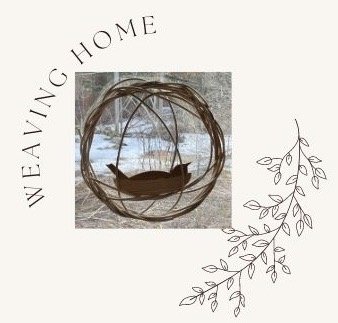I don't know about you, but we started getting seed catalogues in December, usually they don’t arrive until January along with all the bills. It is such a nice relief to sit and dream about a garden and let the the gloom and grayness of winter fade for a while. We look and ask: ‘oh, would that grow here? what would happen if we planted that?’ Even though these thoughts can take us away from the present moment, it is good to dream and to have a vision. While you are dreaming of your garden, Star has some important information to share. A garden can give us wonderful nourishing food. and it’s important to get your seeds from companies that are involved with care of the earth. Many big corporate companies also deal in pesticides and herbicides and we don’t want to support those practices. An example of a company you might want to support is Turtle Tree Seed in Copake, New York.https://www.turtletreeseed.org
Organic, Biodynamic Seeds | Turtle Tree Seed Initiative
We are a small seed company, an integrated part of Camphill Village, offering a wide selection of certified organic and biodynamic, 100% open-pollinated seeds, for farms and gardens of all sizes, which are grown, selected, cleaned and sent to you with great care.
Not only is the seed bio-dynamically grown but the seed house employs differently abled people from Camphill Village where it is located. Bio-dynamics is a system of earth health that encompasses, not just the land, but works with cosmic rhythms and social ethics as well.
Baker’s Creek Heirloom Seeds in Missouri, has a mission to preserve heirloom seed varieties globally. They preserve the seeds so they are not lost because of war and displacement of people. They have a very strong anti GMO bias. Nature modifies genes all the time. However, humans are doing it to allow for an agriculture based on herbicide and pesticide controls that have devastating consequences both for the soil and the eaters of residual poisons.
Rare Heirloom Seeds | Baker Creek Heirloom Seeds
https://www.rareseeds.com
Buy Heirloom Garden Seeds online. Over 1800 varieties of Vegetables, Rare Flowers & Herbs. 100% Non-GMO open pollinated seeds. Free heirloom seed catalog!
Fedco in Maine is the main organic growers cooperative. They grow many local varieties that would do well in the Adirondacks. Their catalogue is a storehouse of information on all aspects of gardening. And their catalogue identifies the size of the seed house their seed comes from and the practices of those houses. They don’t sell seeds from companies that are involved in pesticide and herbicide production, but they do sell seeds that have been genetically modified, they identify the practices in their catalogue so you can choose.
Fedco -Co-op Seeds, Gardening Supplies, Trees, Potatoes, Bulbs
https://www.fedcoseeds.com
Fedco is a cooperative seed and garden supply company. Its divisions, Fedco Seeds, Organic Growers Supply, Fedco Trees, Potatoes, Onions and Exotics, and Fedco Bulbs, offer untreated vegetable, herb and flower seed; soil amendments, cover crops, garden tools, organic growing supplies, gardening books, seed potatoes, onion sets, fruit trees, berry bushes, ornamentals, …
Fruition Seed in Canandaigua, NY (www.fruitionseeds.com), High Mowing in Vermont(wwwhighmowingseeds.com) and the Seed Saver Exchange(wwwseedsavers.org) are also good companies that are worth investigating.
It is important for us to research the policies, sources and values of a seed company, so that we can buy seed responsibly.
Saving seed yourself is a rewarding thing to do even if you are keeping only one or two varieties of plants you particularly love. If you save your seed the plant variety will adapt more and more strongly to your soil and growing conditions and over time you will see better and better results in your harvests.
If this is a subject you would like to pursue or if seed saving is something you would like to know more about, there are many books about both philosophy and technique.
One suggestion. Will Bonsall is a seedsman and homesteader and his book, Will Bonsall's Essential Guide to Radical, Self-Reliant Gardening will be an eye opener. I recommend it, not so much as something any of us will imitate closely but as an education in all the issues surrounding our food and our way of living with the earth. For example, Will has specialized for years in biennial plant seeds such as lettuce and has initiated something he calls copyleft. Copyleft means that the seed he sells may never be owned or patented and may forever be freely grown by anyone. This is his personal response to the corporate patenting of seed currently going on with the goal that there will one day there will be corporate ownership of all seed so that everyone must buy if they wish to grow anything without punishment for copyright infringement.
The book is wide ranging and is the fruit of decades of mindful living in cooperation with the land.
Seed to Seed by Suzanne Ashworth, 2002, Seed Savers Exchange, is a resource for the details of saving seed from specific varieties.
What better way to spend the long north country winter evenings than preparing to join in the great birthing of spring.

